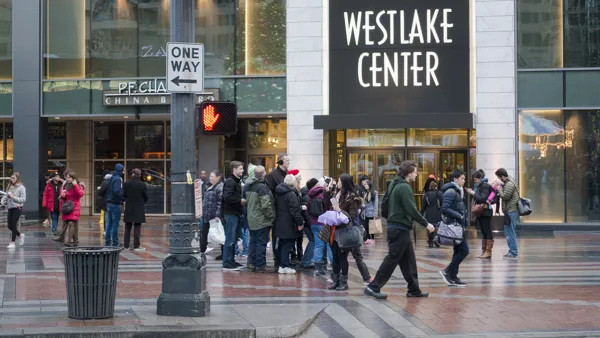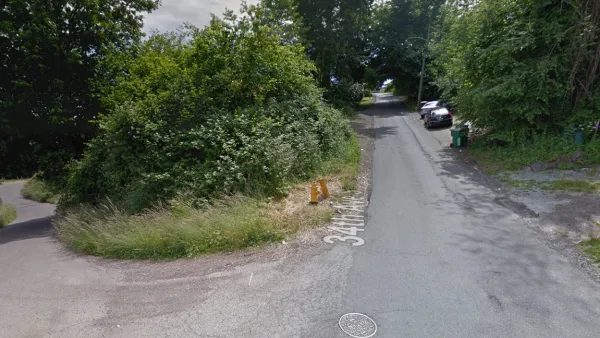The promised update for the city of Seattle's Pedestrian Master Plan was released to the public last week.

The city of Seattle recently announced a series of pedestrian safety investments, as guided by the city's updated Pedestrian Master Plan (PMP) and Vision Zero initiative.
The big ticket item of the updated PMP: $22 million in sidewalk improvements, paid for by the Move Seattle levy. According to a press release released by Mayor Ed Murray, the PMP "focuses these investments by prioritizing sidewalks that provide safer access to schools and transit options. The PMP is guided by an equity consideration, ensuring under-served communities are prioritized for pedestrian improvements."
In addition to the $22 million targeted by the city's updated Pedestrian Master Plan, the city also announced the acceleration of the second phase of the Rainier Avenue corridor safety improvements project. "Vision Zero improvements may include marked crosswalks, dedicated left turn arrows, channelization upgrades, and new signal timing to prioritize pedestrians," according to the press release from the Mayor's Office. The announcement solidifies rumblings about the future of the project from February.
For more on the update process that produced this $22 million priority on curbs around the city, see Ryan Packer calling for concrete improvements in a post from December 2016.
FULL STORY: Mayor Murray unveils updated Pedestrian Master Plan, investments improving safety in Seattle neighborhoods

National Parks Layoffs Will Cause Communities to Lose Billions
Thousands of essential park workers were laid off this week, just before the busy spring break season.

Retro-silient?: America’s First “Eco-burb,” The Woodlands Turns 50
A master-planned community north of Houston offers lessons on green infrastructure and resilient design, but falls short of its founder’s lofty affordability and walkability goals.

Delivering for America Plan Will Downgrade Mail Service in at Least 49.5 Percent of Zip Codes
Republican and Democrat lawmakers criticize the plan for its disproportionate negative impact on rural communities.

Test News Post 1
This is a summary

Test News Headline 46
Test for the image on the front page.

Balancing Bombs and Butterflies: How the National Guard Protects a Rare Species
The National Guard at Fort Indiantown Gap uses GIS technology and land management strategies to balance military training with conservation efforts, ensuring the survival of the rare eastern regal fritillary butterfly.
Urban Design for Planners 1: Software Tools
This six-course series explores essential urban design concepts using open source software and equips planners with the tools they need to participate fully in the urban design process.
Planning for Universal Design
Learn the tools for implementing Universal Design in planning regulations.
EMC Planning Group, Inc.
Planetizen
Planetizen
Mpact (formerly Rail~Volution)
Great Falls Development Authority, Inc.
HUDs Office of Policy Development and Research
NYU Wagner Graduate School of Public Service




























